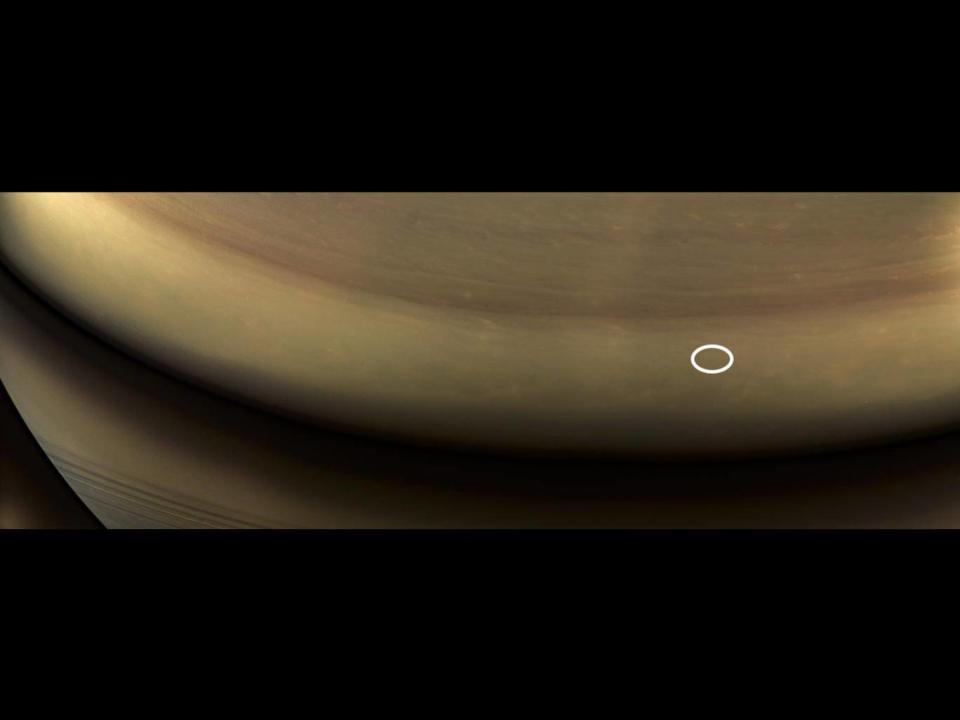Nasa Cassini spacecraft's final images before smashing into Saturn released by agency
Before smashing into Saturn last September, Nasa’s Cassini spacecraft sent back some of the most spectacular images of the planet ever seen.
Now Nasa has revealed an image showing the spot on the planet’s surface where the probe met its end.
Stitched together from some of the very last images captured by Cassini’s cameras, the mosaic shows the location where the spacecraft would enter the planet’s atmosphere just hours later.

Setting off from Earth in 1997, the craft spent two decades exploring the solar system, first entering orbit around Saturn in 2004 and later embarking on a seven-year mission to explore the planet and its 60-plus moons, some of which were previously unknown.
Cassini’s mission was extended twice during its 20-year life, but the probe was sent to its final resting place in September last year, burning up on the surface of Saturn to stop it spreading alien bacteria carried there from Earth.

But while the majority of the probe was destroyed, Nasa revealed in December that one small piece of the craft - an aluminium cover for the Cosmic Dust Analyzer (CDA) - became detached and discarded early in the mission and is still floating somewhere in the solar system, possibly in a vague orbit around the Sun.
The view of Saturn released by Nasa this week looks towards the planet’s night side, lit by sunlight reflected from the rings.
The series of images was taken with the craft’s wide-angle camera on 14 September, 2017 – just one day before its final dive – at a distance of approximately 394,000 miles from the planet’s surface.
According to Nasa, this is as close to Saturn as any probe has ever come.
The images were taken using red, green and blue spectral filters and combined to show the scene in near natural colour.
Data and images sent by the probe before its dramatic end continue to be a rich source of information about the solar system’s second largest planet.
Scientists expect to be analysing the data for several years to come.
"This is the final chapter of an amazing mission, but it’s also a new beginning," said Thomas Zurbuchen, associate administrator for NASA's science mission directorate at NASA headquarters in Washington, shortly after the completion of the mission.
"Cassini’s discovery of ocean worlds at Titan and Enceladus changed everything, shaking our views to the core about surprising places to search for potential life beyond Earth."

 Yahoo News
Yahoo News 